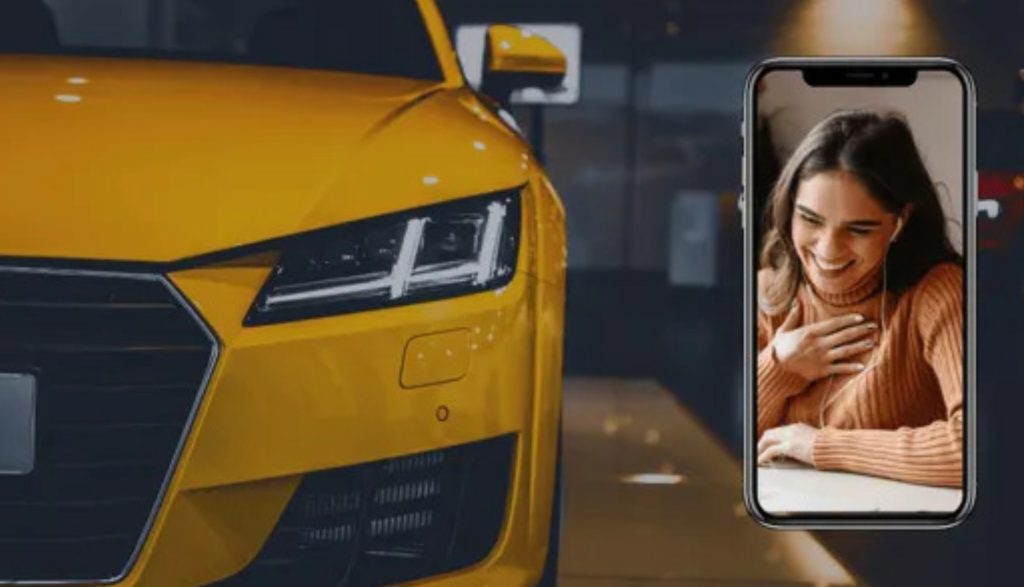
The Rise of Online Car Sales: How Automotive E-tailers Are Redefining the Buying Experience
The Shift in Consumer Behavior
In recent years, the automotive industry has witnessed a seismic shift in how consumers approach car buying. Traditionally, purchasing a vehicle meant navigating through crowded dealerships, haggling with sales representatives, and spending hours finalizing financing arrangements. However, with the advent of e-commerce and the rise of automotive e-tailers, consumers now enjoy a streamlined and more comfortable online shopping experience. This change has been accelerated by the pandemic, which pushed many consumers to embrace digital solutions. People now expect the same convenience and transparency when it comes to car buying as they experience when purchasing other goods online.
The Digital Dealership Experience
Automotive e-tailers are redefining the buying experience by transforming traditional car dealerships into engaging digital platforms. These online platforms allow customers to browse extensive inventories of new and used cars, complete with high-quality images and 360-degree views, right from their living rooms. With user-friendly interfaces, potential buyers can filter their search based on preferred makes, models, and price ranges, enabling them to find their dream car in a matter of clicks. Personalized recommendations based on previous searches and AI-powered chatbot assistance enhance customer satisfaction, stepping away from the stereotypical pressure of waiting for a salesperson to approach.
Building Trust in a Virtual Marketplace
Trust is a significant concern when making substantial purchases online, and automotive e-tailers are aware of this. These platforms are incorporating various strategies to build customer confidence. Virtual showrooms and detailed vehicle histories provide buyers with essential information that can closely mimic the in-person experience. Additionally, many automotive e-tailers offer thorough inspection reports, allowing customers to see the condition of a vehicle before they decide to buy. Transparent pricing, free returns, and money-back guarantees further alleviate fears, making potential buyers feel secure in their decision to purchase a vehicle online.
The Role of Technology in E-tailing
The integration of advanced technology in the automotive buying process has been a game-changer for e-tailers. Virtual reality (VR) and augmented reality (AR) tools are now enabling customers to experience vehicles in immersive ways, as they can visualize how a car would fit in their lifestyle. Beyond engaging visuals, automated underwriting and financing tools have made it easier for customers to get competitive loan rates with less effort. Features like online trade-in evaluations speed up the entire process, allowing customers to walk away from the experience feeling empowered and satisfied rather than overwhelmed and anxious.
Changing the Sales Process
Increasingly, automotive e-tailers are finding new ways to change the sales process itself. Instead of a pushy sales approach, many online platforms focus on providing educational content and resources, allowing customers to make informed decisions at their own pace. Webinars, video testimonials, and online guides not only enhance the customer experience but also establish the e-tailer as a trusted authority in the industry. Consequently, consumers feel more in control over their purchasing journey, often leading to higher satisfaction rates and a willingness to recommend these platforms to friends and family.
A Future Rooted in Personalization
As the digital landscape continues to evolve, the future of online car purchasing is marked by an emphasis on personalization. E-tailers are utilizing data analytics to understand consumer preferences better and tailor offerings accordingly. From personalized ads to customized follow-up communications, the goal is to create a shopping experience that feels intimate and thoughtfully curated. As automotive e-tailers grow in popularity, the challenge lies in maintaining this level of service as they scale. Balancing automation with human interaction will be key to ensuring that customers feel valued and heard in an increasingly digital world. The continued evolution of online car sales promises not only to redefine the buying experience but also to shatter long-held perceptions about purchasing vehicles.
From Showroom to Smartphone: The Digital Transformation of Automotive Retail

A New Era in Car Buying
The automotive retail landscape is undergoing a dramatic transformation as technology reshapes how consumers interact with dealerships. Gone are the days when buying a car meant spending hours wandering from showroom to showroom, negotiating over price, and enduring high-pressure sales tactics. Today, the shift to digital is making car buying an experience that can be started—if not completed—entirely from a mobile device. As customers increasingly embrace a digitally-driven world, automotive retailers must adapt to meet the evolving expectations for convenience, transparency, and personalization.
The Rise of Online Shopping
The rise of e-commerce in general has paved the way for a wave of automotive e-tailers that provide online marketplaces, slick user interfaces, and vast inventories of both new and used vehicles. Consumers can now browse vehicles on their smartphones, compare features and pricing, and even read reviews from fellow buyers—all without stepping foot outside their homes. This convenience caters especially well to younger generations that prioritize technology and expect seamless digital experiences. Online platforms are effectively breaking down geographical barriers, enabling customers to explore inventory from dealerships across the country, expanding their choices beyond what’s available locally.
Redefining the Showroom Experience
Even as the digital landscape evolves, traditional dealerships aren’t simply vanishing—they are transforming. Many dealerships are embracing a hybrid model, creating “showroom experiences” that complement their online offerings. When customers do visit a dealership, they often find a high-tech environment featuring digital kiosks and interactive displays to enhance their experience. Dealerships can also leverage augmented reality (AR) technology to provide virtual walkthroughs of vehicles. This “digital showroom” approach helps create a seamless connection between the online and in-person experience, allowing customers to engage with the products in a way that feels both modern and familiar.
Trust and Transparency in the Digital Age
For many consumers, purchasing a vehicle is one of the most significant financial decisions they will make, which makes trust a crucial factor in the process. Historically, a lack of transparency in pricing and vehicle conditions could lead to buyer apprehension. Fortunately, digital transformation has ushered in an era of enhanced transparency. Automotive retailers are now providing comprehensive vehicle histories, upfront pricing, and peer reviews to establish credibility. Features like live video tours of vehicles and online chat functionality allow customers to ask questions in real-time, fostering a sense of trust that can help bridge the gap between online and offline experiences.
The Importance of Data-Driven Personalization
As automotive retailers increasingly rely on digital platforms, they have the opportunity to harness data analytics to create personalized shopping experiences for customers. By tracking online behaviors, preferences, and purchase history, retailers can deliver targeted recommendations via personalized emails or app notifications. This level of customization not only makes the customer feel special but also streamlines their shopping journey, reducing the overwhelming array of choices to those that genuinely match their needs. The ongoing challenge will be to balance personalization with privacy, ensuring customers feel valued without their data being mishandled.
The Future of Car Buying is Here
As the digital transformation in automotive retail continues to unfold, one thing is clear: the future of car buying will be an increasingly integrated experience. The combination of technology and consumer demand is shaping a landscape where choices abound, and the process is user-friendly and efficient. While the smartphone has ushered in a new era of convenience, traditional values such as trust, transparency, and personal connection still hold significance. For automotive retailers, the key to success lies in embracing innovation while staying grounded in the core principles that have historically driven the industry forward. Both online and offline experiences will need to coexist and complement each other, ensuring that as we advance into the future, the journey to purchasing a vehicle is as enjoyable as it is efficient.
Driving Customer Loyalty: Strategies for E-tailers and Retailers in the Competitive Automotive Market

The Loyalty Landscape
In today’s fiercely competitive automotive market, customer loyalty is a prized possession. Unlike previous generations, consumers are no longer bound by brand allegiance; they have myriad options at their fingertips, thanks to the rise of e-commerce. This evolution has led both e-tailers and traditional retailers to reassess their strategies for building and maintaining relationships with their customers. Those looking to thrive must dig deeper into what drives loyalty, recognizing that it’s often rooted in more than just price; it’s about creating meaningful experiences that resonate on a personal level.
The Power of Personalization
One of the most effective strategies for enhancing customer loyalty is personalization. Today’s consumers expect a tailored experience that reflects their individual preferences, needs, and lifestyles. E-tailers can leverage data analytics to understand their customers better, allowing them to offer personalized product recommendations, special deals, and targeted communications. For brick-and-mortar retailers, this means cultivating an in-depth understanding of customers through loyalty programs, feedback systems, and even social media interactions. When customers feel understood and valued, they are more likely to return—a simple yet powerful principle that can have a lasting impact.
Creating Seamless Omnichannel Experiences
In an increasingly digital world, delivering a seamless omnichannel experience is essential. Customers routinely switch between online and offline platforms, and they expect a consistent experience regardless of the channel. E-tailers can optimize their websites and apps to ensure smooth navigation, easy purchasing processes, and efficient customer service. Physical dealerships must also adopt integrated strategies by incorporating technology into the customer experience—think virtual showrooms and online chat options during dealership visits. By bridging the gap between online and offline interactions, businesses reinforce reliability, making customers feel valued and more likely to remain loyal.
Building Community and Trust
Building a community around your brand is a potent strategy that transcends transactional relationships. Engaging with customers on social media, hosting local events, and encouraging user-generated content can create a sense of belonging for your clientele. Brands that showcase real customer stories, testimonials, and user experiences foster an environment of trust and authenticity. Moreover, transparency in pricing, policies, and product quality reassures customers that their interests are a priority, further solidifying loyalty. In this competitive landscape, promoting a connection with customers can set businesses apart and cultivate longevity in relationships.
The Importance of After-Sales Support
Customer loyalty does not end with a sale; it is often solidified through exceptional after-sales support. E-tailers can enhance their customer relationships by offering comprehensive support, including easy returns, warranty assistance, and proactive follow-up communications. Traditional retailers should focus on building long-term relationships through post-sale services such as maintenance reminders, service discounts, and customer satisfaction surveys. By being there for customers long after they leave the dealership or finalize their online purchase, businesses create an environment where customers feel valued and are more likely to return when it’s time for their next vehicle.
Continuous Innovation and Adaptation
Finally, the ability to innovate and adapt to changing consumer preferences is key to maintaining customer loyalty in the automotive market. As technology advances, e-tailers and retailers must stay ahead of trends, whether it be through enhancements in their digital platforms or by introducing new services that reimagine the buying experience. Remaining agile and responsive to customer feedback will not only keep businesses relevant but also demonstrate that they value their customers’ opinions. In a world where choices abound, brands that are willing to evolve will foster loyalty among customers who appreciate their dedication to meeting their needs both today and in the future.
In conclusion, driving customer loyalty in the competitive automotive market is a multifaceted endeavor that requires a holistic approach. By focusing on personalization, creating seamless omnichannel experiences, building community and trust, providing exemplary after-sales support, and committing to continuous innovation, both e-tailers and traditional retailers can cultivate lasting relationships with their customers. In doing so, they not only enhance their bottom line but also pave the way for a more engaged and satisfied customer base.





